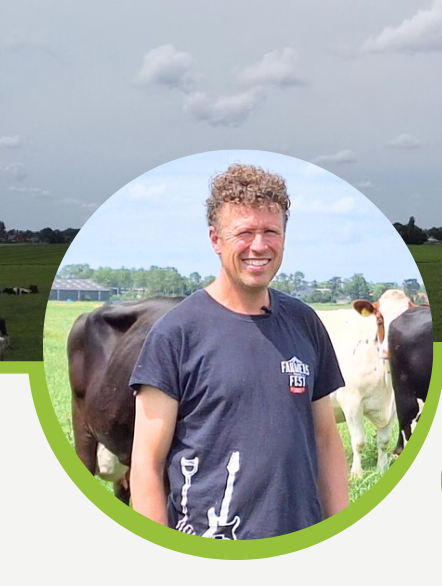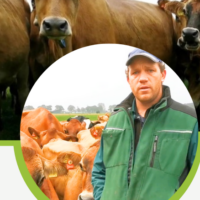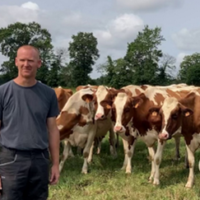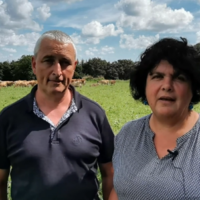Providing a mixed ration in the pasture
Joeri HAM – Improvement of grassland management
Description
Practice abstract
Joeri Ham, a dairy farmer in the Netherlands, actively manages the proportion and quality of grass in his cows’ diet by offering two different types of pasture each day. His 70 to 80 dairy cows spend a lot of time grazing by Dutch standards, being outdoors for a significant number of hours annually. Each day, the cows graze in two different fields. While they may remain in the same field for up to three half-days, they always have access to a relatively fresh field for part of the day and an older field during another part. With this approach, the farmer aims to provide a mixed ration on pasture, hoping for a more balanced dry matter intake throughout the day. In the older field, cows tend to consume more stemmy grass, while in the fresher field they primarily eat leafy material. Joeri refers to this system as “modern rotational grazing.” The system is built on a weekly farm walk to assess pasture availability. In spring, fixed wires are used to effectively section off paddocks and maintain an organized workflow. During these walks, the farmer ranks fields from high to low in terms of grass supply, ensuring targeted use of the available forage. Joeri has observed that, despite differences in grass structure and quantity, cows show clear preferences for certain spots and even for specific fields. This highlights the importance of carefully monitoring and managing grazing behaviour to optimize forage utilization.
Context profil

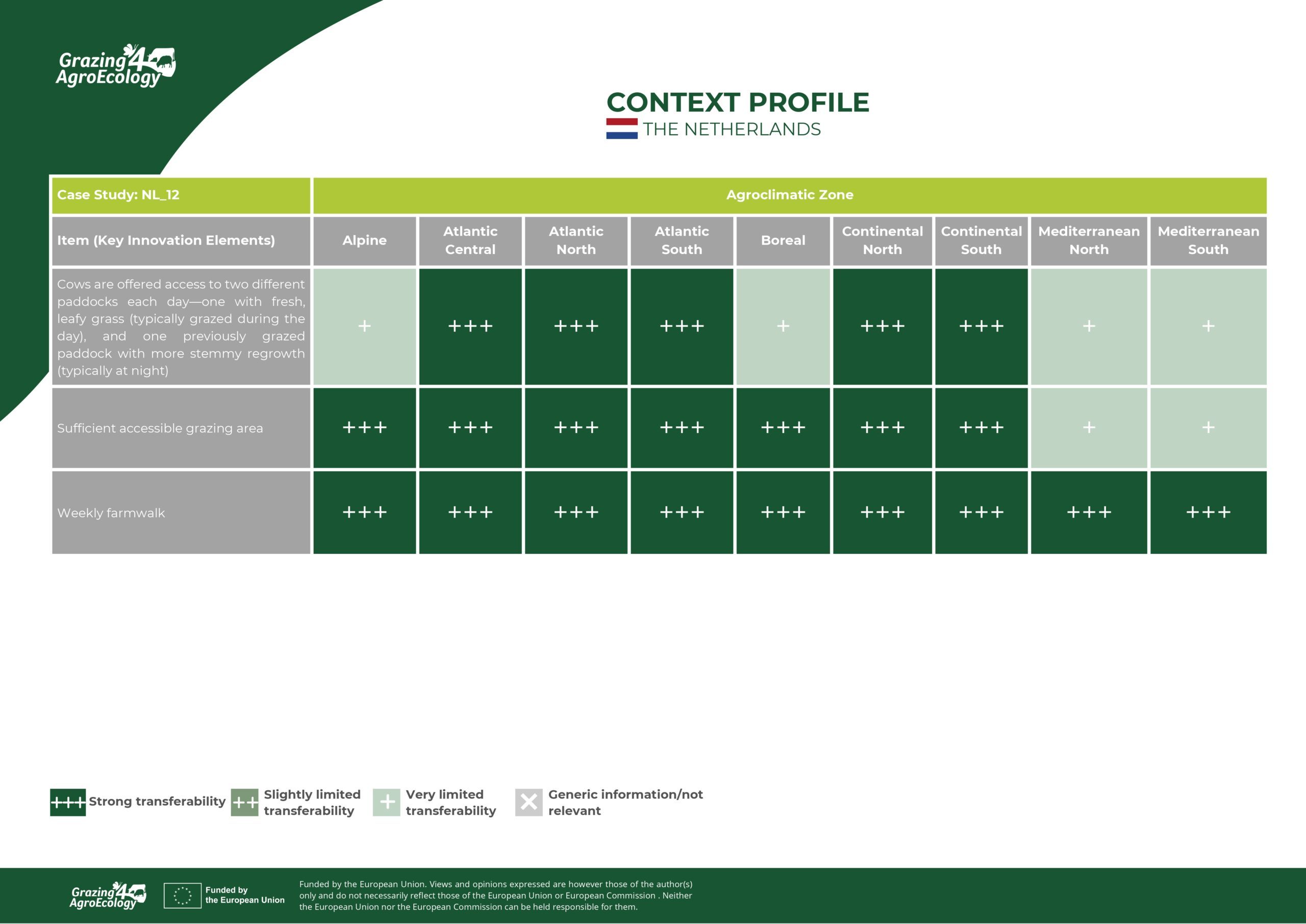
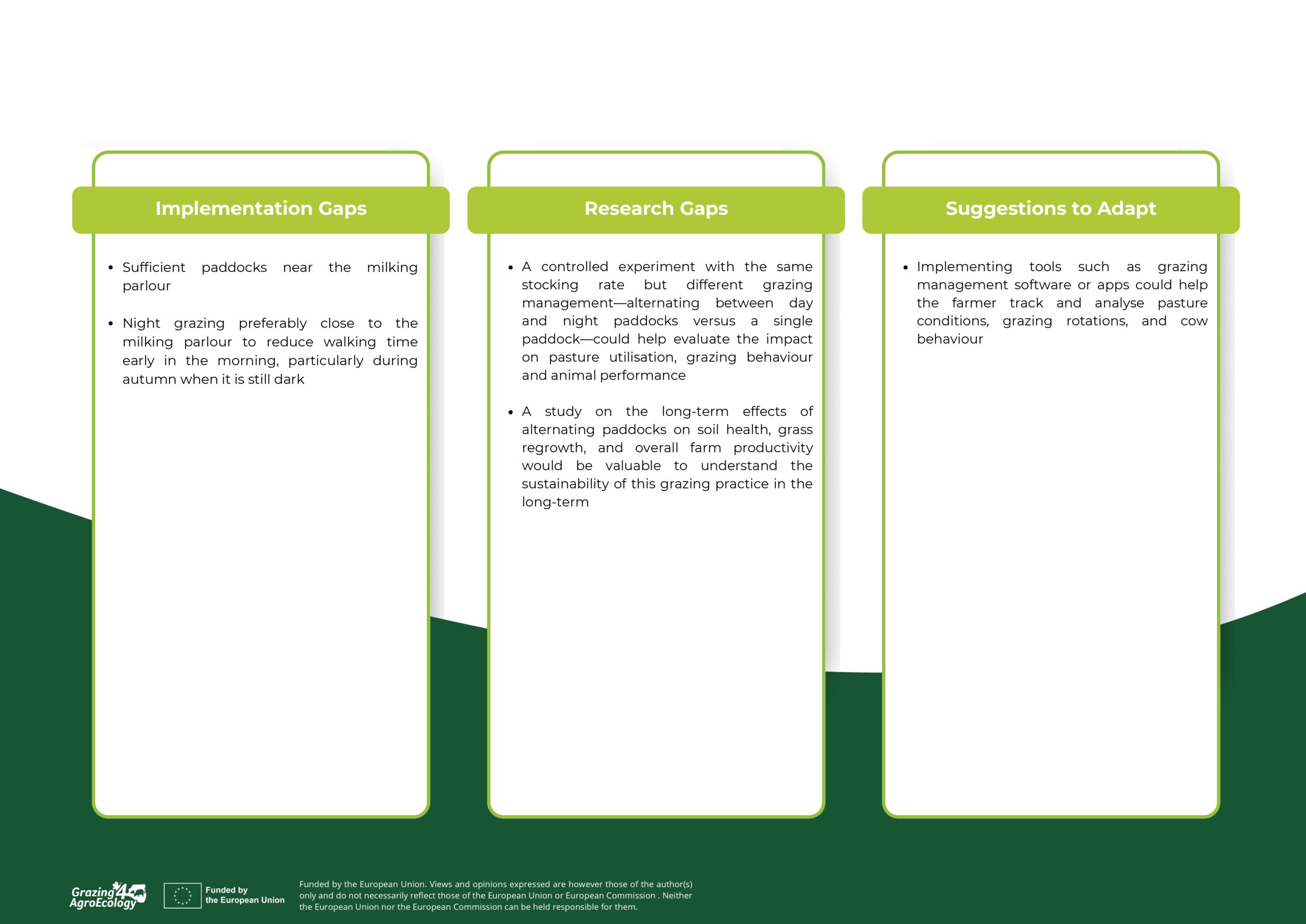
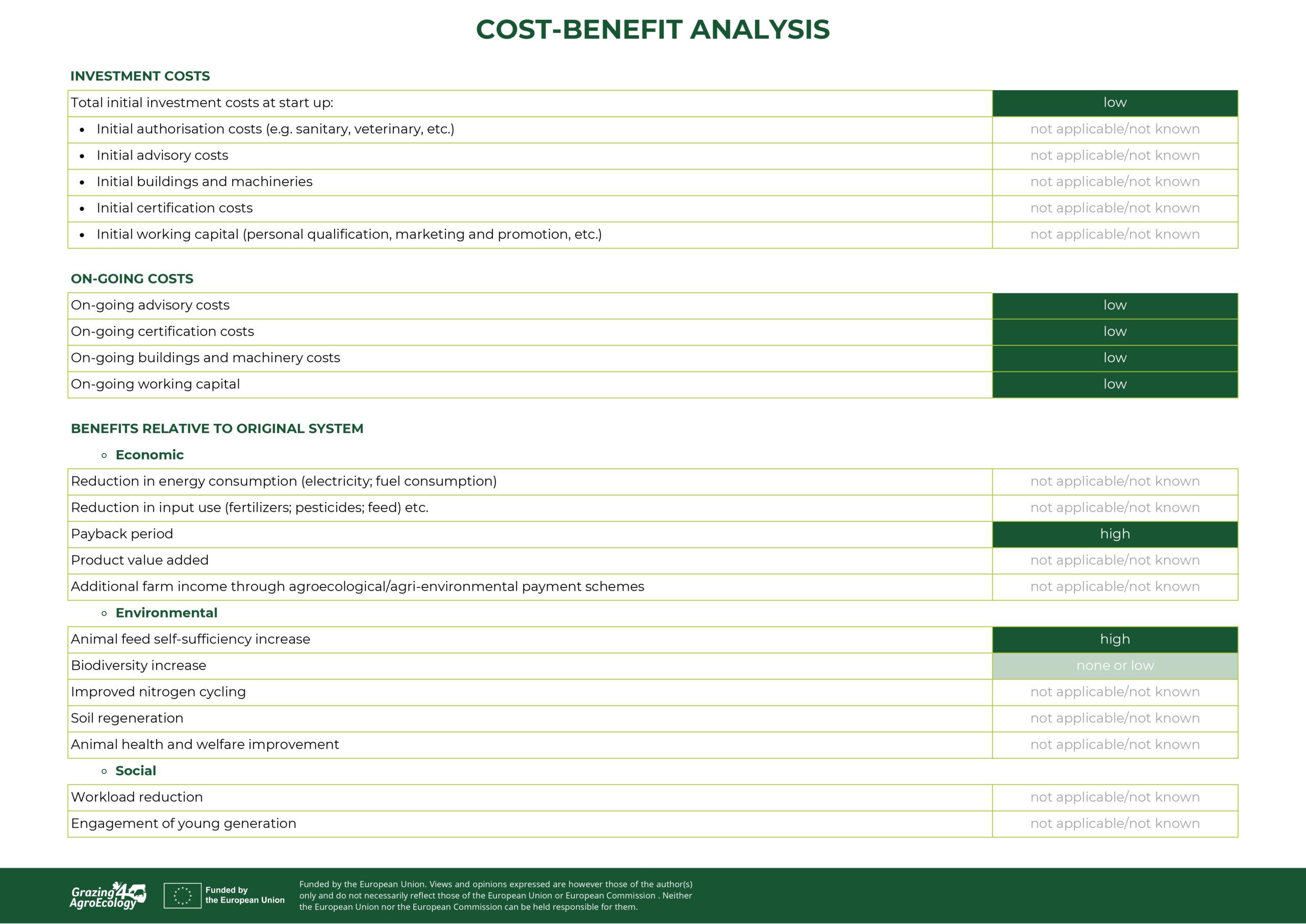
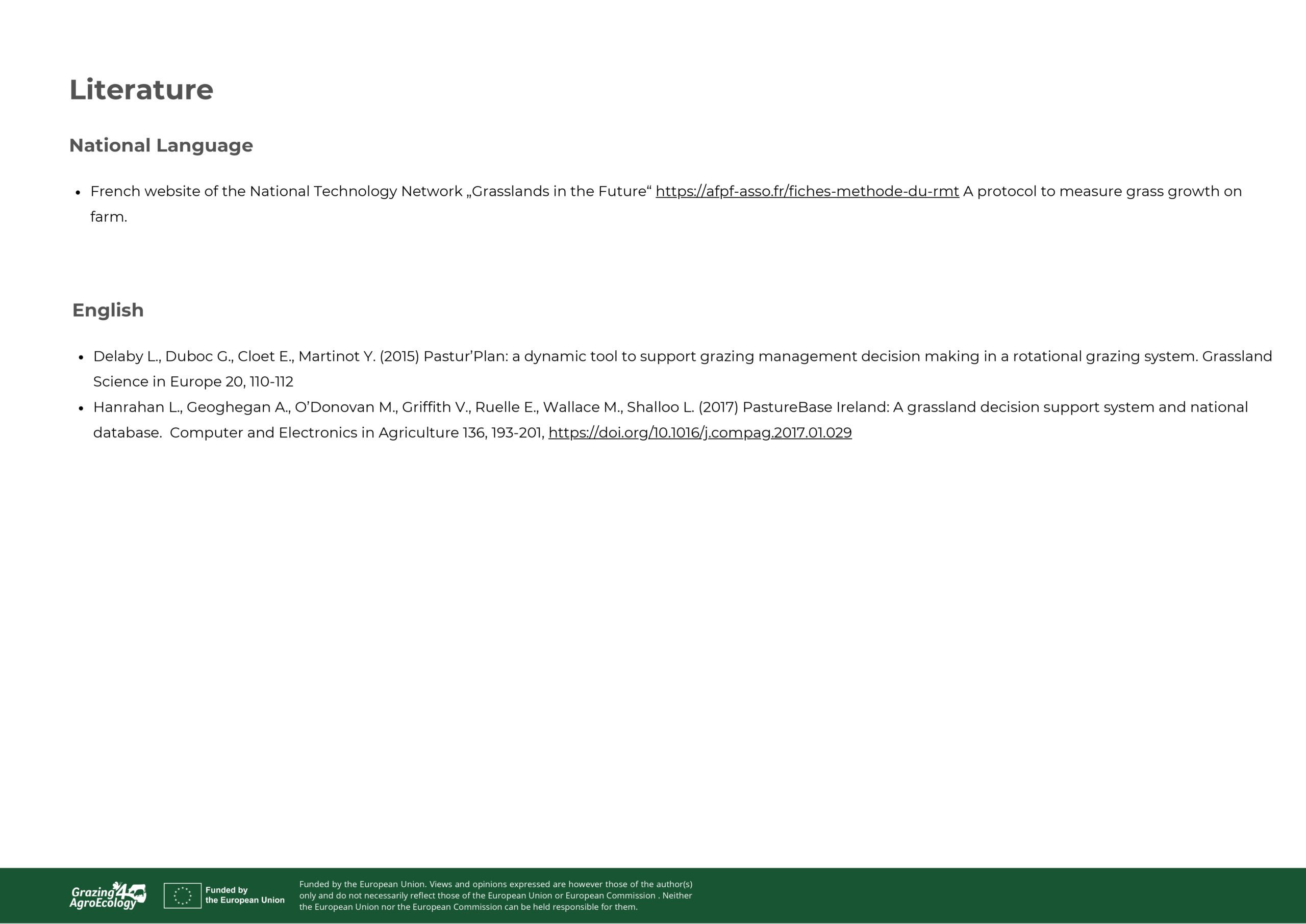
Additional information
| Main domain of innovation | Improvement of grassland management |
|---|---|
| Agroclimatic area | Atlantic central |
| Climate | Moderate rainfall |
| Soil Type | Clay |
| Management | Pasture dairy |
| Technical | Easy |
| Finance/investment | Low |
| Market | Global |
| Social | Full-time farmer |
